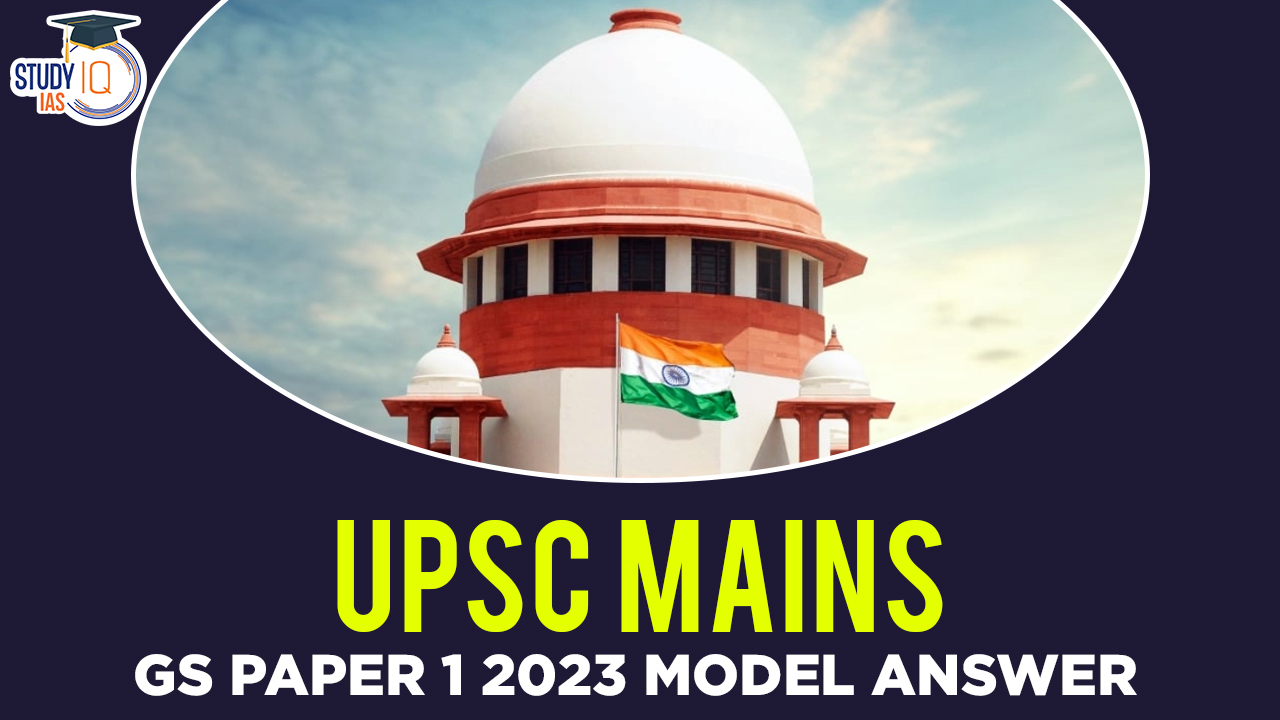Q19. Why is caste identity in India both static and fluid? (15m)- Society
भारत में जातीय अस्मिता गतिशील और स्थिर दोनों ही क्यों है?
Introduction:
Caste are social groupings or segments the membership of which is acquired and fixed by birth.
Identity refers to the fact of being who a person is. Caste identity make a person to identify herself based on her caste.
Caste identity in India is static due to:
- Segmental division of society: Caste is a social grouping, the identity of which is acquired and fixed by birth.
-
-
- Ex.- Kshatriya as a caste identity.
-
- Hierarchy: Hierarchy is a scheme of arranging castes in terms of so-called superior and inferior positions in relation to each other.
-
-
- Ex.- Ayyengar Brahmins consider themselves superior to Ayyer Brahmins in Tamil Nadu.
-
- Restrictions on feeding and social intercourse: Based on caste identity, Dalit cooks often are boycotted for Mid Day Meal programs by so-called caste custodians.
-
-
- Ex- A woman Dalit cook was reinstated to service by District Magistrate Kanwal Tanuj in MH.
-
- Civil and religious disabilities and privileges of different sections: So-called upper castes invariably never face discrimination while renting a home in any part of India.
- Lack of unrestricted choice of occupation: Bezwada Wilson complains that Dalits would involuntarily find themselves engaged in the night soil scavenging work.
- Restrictions on marriage: Caste-identity-based endogamous marriages are still the norm.
-
- Ex.- Sunday Matrimonial advertisements in The Hindu.
Caste identity in India is increasingly becoming fluid due to:
- Sanskritization: The so-called lower castes have adopted the rites, rituals, customs, and way of living of the so-called upper castes.
-
-
- Ex.- Dalit capitalism.
-
- Dissociation between caste and occupation: No longer one can deduce a person’s caste by her occupation.
- Ex.- A person working in a shoe shop may not be a cobbler by caste.
- Changes in caste identity: From ascriptive to achieved. Today, individuals identify themselves on the basis of Educational qualification, occupational position, income etc.
- Weakening of rules of purity and pollution: Seen in the inter-caste marriages taking place.
-
-
- Ex.- MP government promoting Inter-caste marriages.
-
- Emergence of caste organizations: Dominant castes like Jats and Patidars claiming OBC status.
- Process of democratization: Political organizations catering to multiple castes/sections of society.
- Ex.- BAMCEF and BSP.
Conclusion:
Thus, the caste identities are static as well as fluid for the gratification of contemporary needs
Check out the UPSC Mains GS Paper 1 2023 Analysis with detailed expatiation of the topics of Mains GS Paper 1 By the Study IQ Experts.


 NCERT Books for UPSC Preparation, Check ...
NCERT Books for UPSC Preparation, Check ...
 UPSC Syllabus 2025, Check UPSC CSE Sylla...
UPSC Syllabus 2025, Check UPSC CSE Sylla...
 UPSC Mains Syllabus 2025, Optional Sylla...
UPSC Mains Syllabus 2025, Optional Sylla...





















